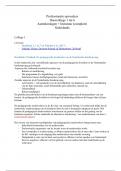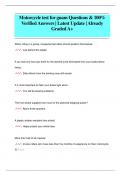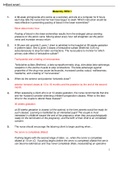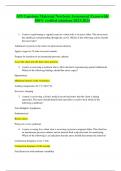Exam (elaborations)
Test Bank - Prescotts Microbiology 12th Edition By Willey Chapter 1 - 43 |Newest Version
Test Bank - Prescotts Microbiology 12th Edition By Willey Chapter 1 - 43 |Newest Version Test Bank - Prescotts Microbiology 12th Edition By Willey Chapter 1 - 43 |Newest Version Test Bank - Prescotts Microbiology 12th Edition By Willey Chapter 1 - 43 |Newest Version
[Show more]












